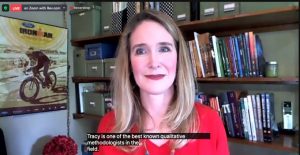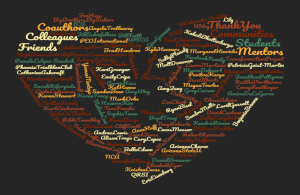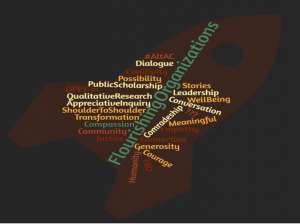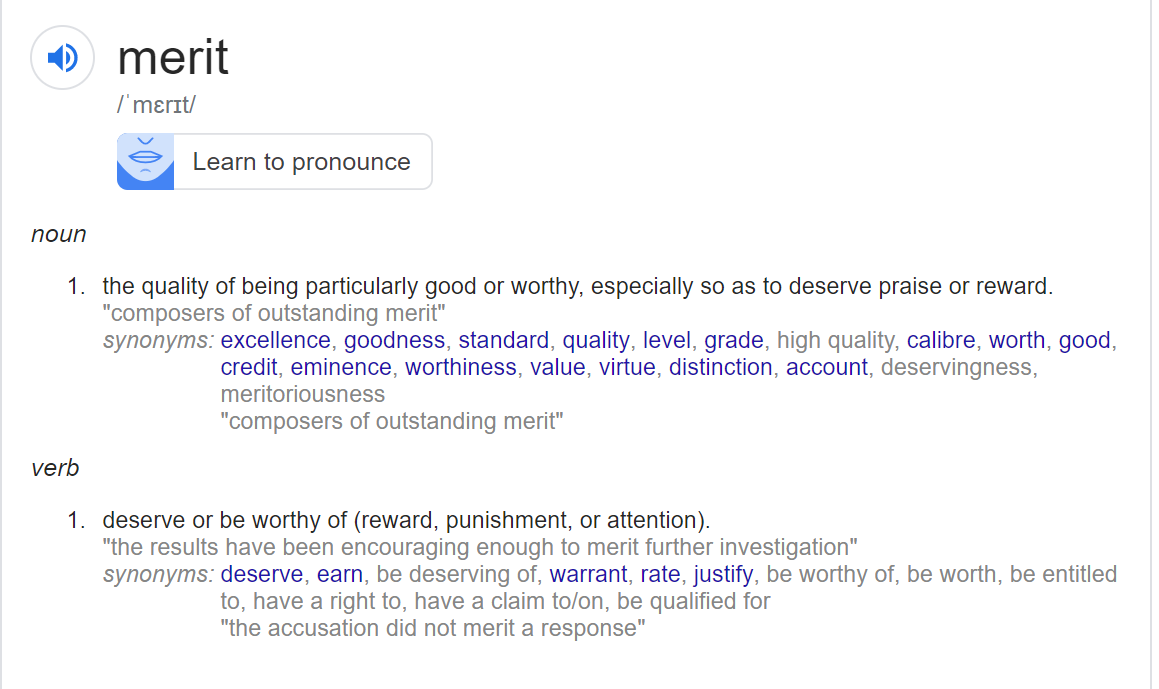The gratitude, shit, and ambivalence of "being distinguished"
Last November during the 2019 annual convention of The National Communication Association, I joined the five others who were named this year as one of their Distinguished Scholars. With the conference virtual in nature, and the scheduled time (which landed at 6 a.m. for me) I had originally approached the panel as more as a chore than a celebration. Nonetheless, like many academic “have-tos” the panel spurred some thinking.
 The award is meant to reward communication professors for a lifetime of scholarly achievement. As noted in an article that my school wrote about the award, “NCA’s Distinguished Scholar Award is the ultimate honor bestowed by our largest professional association. Only four or five of these awards are provided each year, so this means that recipients are in the top 1% of the top 1% of scholars in our discipline.”
The award is meant to reward communication professors for a lifetime of scholarly achievement. As noted in an article that my school wrote about the award, “NCA’s Distinguished Scholar Award is the ultimate honor bestowed by our largest professional association. Only four or five of these awards are provided each year, so this means that recipients are in the top 1% of the top 1% of scholars in our discipline.”
So, this is reason for celebration, yes? Sure, of course, I feel happy that my peers have appreciated and admired my scholarship.
But, truth be told, I’m also left with mixed feelings. One of those feelings is relief. Anyone who knows me knows that one of my traits is striving, reaching, and chasing. This is exhausting for me. And probably exhausting for others to put up with. During my sabbatical, I have been engaging in many self-care practices that are geared more toward being and stretching than chasing. Thank you Scott Sonenshein and Strozzi Institute for your help with this.

Another feeling that this award brings is ambivalence. As many readers may know, the award comes with baggage. In Spring 2019, the communication discipline came under sharp critique because of the whiteness of the distinguished scholars and our discipline at large. Along with a community of others, I spoke out about this issue via blog posts and an article contribution to Departures in Critical Qualitative Research that discussed the whiteness of “merit.” So, to receive the award, as a white woman, I am also perpetuating the whiteness of the group of Distinguished Scholars. To borrow Sarah Ahmed’s apt metaphor, I am another brick in the wall of exclusion and privilege (something I expand on in the afterword of this article).
The hypocrisy of receiving an award that perpetuates white privilege is a disillusioning and uncomfortable space to be in. But, I don’t want to deal with the discomfort by shielding my eyes or looking away. But instead, as Pema Chodron would suggest, I’m choosing to look at and be with the shit. And consistently look carefully at my own practices and scholarship in regard to how I can motivate transformation, social justice, and disruption of #CommunicationSoWhite.

Third, this award comes with a huge feeling of gratitude. I couldn’t have done this alone. The scholarship I’ve accomplished over the years (which include a couple books and over 90 scholarly manuscripts) has been amassed in community with other people—including mentors, colleagues, coauthors, students, and communities of supporters. In preparing for my Distinguished Scholar talk, I spent several hours collecting and ruminating on the many people who have served as cheerleaders, constructive critics, thought partners, and hand holders. Tears ran down my face as I considered the overflow of memories. My thanks and appreciation is overflowing for these amazing human beings.

Finally, I’m not done yet. Although Distinguished Scholar is a “career” award, I’ve still got lots of juice to squeeze. Some of my future trajectories are captured in this graphic. The rocket ship makes me smile and feel energized for what’s next. I hope others will join on the ride.
How I chose my academic path, or better yet, how it chose me
Recently I have been asked by several folks why I chose to go to graduate school and/or why I study what I do. I'm not a huge fan of "why" questions and much prefer "how questions" (something that is its own topic in itself, and that I discuss in this video). Regardless, what follows is a reflection on my own journey. I originally wrote it for a book chapter coauthored with Shawna Malvini Redden for Jaime McDonald and Rahul Mitra's kick-ass book, "Movements in organizational communication research". One of the things I love most about this book is that every chapter begins with the authors' stories. This was a brilliant move by Rahul and Jaime, as there's immense value for readers to understand the subjective and contextual factors that motivate and shape ideas and literatures. Knowing such history helps readers to counter-bias and understand why certain issues or paths were taken rather than others. What's more, I encourage people to think about how authors' messy background and humanity serve to shape, constrain, and produce ideas that we might, at first glance, take to be "objective" or "canon." So, here's my journey. What is yours? What are the life paths of your favorite authors?
 Sarah’s Academic Journey
Sarah’s Academic Journey
I gulped in several breaths of warm evening air from the penthouse suite balcony. It felt good to escape the air conditioning and drama inside. Gazing toward the glowing lights several miles away, I imagined the Friday night West Los Angeles scene—beautiful people enjoying the beginning of their weekend. My watch read 8:12 p.m. I needed to get my face back together before returning to my current reality: working late, again, in a toxic environment, under deadline.
My boss had made it clear: if I wanted to succeed, not only did my public relations writing need to be impeccable but I also needed to get used to working long hours and towing the line. Further, I had to conveniently look away from coworkers frequently glossing over ethical missteps. One of my senior colleagues called it “dancing.” I called it making things up. I was 22 years old and absolutely miserable.
Just six months earlier, I had been so hopeful and happy. I was serving as guest relations coordinator at my beloved alma mater and had just landed this coveted public relations agency position during the recession of 1993. Sure, I was only making $21,000 a year, but at least someone offered me a job. What’s more, it was for a public relations agency specializing in socially responsible businesses. What could be better?
My university coursework had trained me to write strategic plans, interact with corporate executives, and craft meaningful community events. The actualities of my job stood in sharp contrast: 60-hour work weeks, a demeaning boss, forced cheerfulness, endless faxing, and unrealistic deadlines. I was burned out, exhausted, devastated.
And so, on that penthouse balcony that summer night, I made myself a promise. I would go to graduate school and make it my mission to somehow help organizations be nicer places to work. And I would get myself the hell out of that “socially responsible” public relations agency.
One year later, I was a doctoral student at the University of Colorado-Boulder. Three classes there fundamentally impacted my research trajectory: organizational identification and control by Philip Tompkins, organizational ethics by George Cheney, and emotion and communication by Sally Planalp. For class projects, I learned everything I could about organizational burnout, wrote a case study on the ethical problems of basing public relations on corporate social responsibility, and was introduced to the research of Arlie Hochschild (1983), a sociologist whose writing style, savvy, and interest in emotional labor shaped my career.
Also during this time, my language and social interaction professor Karen Tracy (no relation) took me under her wing to study interactions between citizens and emergency 911 call takers. She was interested in how conversational particulars resulted in calls that were especially rude (Tracy and Tracy 1998), whereas I was intrigued by the ways call takers managed their emotion when dealing with especially frightening, humorous, or irritating calls (Tracy and Tracy 1998).
Two years later, I took a break from my Ph.D. coursework to work on the “Radiant Sun” cruise ship. For 229 days straight, I danced the macarena, chit-chatted, called bingo, told stupid jokes, and mostly kept a smile plastered on my face. I took notes and recorded interviews with the idea that I should analyze the emotional labor on the ship when I returned to graduate school. To my excitement, Stanley Deetz started working at CU-Boulder during my year away, and his mentorship helped me critically analyze emotional control in the closed and surveilled environment of the cruise ship (Tracy 2000).
Deetz’s (1998) critical organizational standpoint informed my dissertation and early career studies of correctional officers’ burnout and problematic emotional construction (Tracy 2004). I paid attention to how officers communicatively managed the monotonous, often degrading, and sporadically dangerous work of being “babysitters” and “glorified flight attendants” for convicted felons (Tracy 2005).
Along the way, I designed and taught one of the first communication courses focused on emotion and organizing. Until that time, with few exceptions, emotion and organization scholars basically ignored one another. To make my point on the first day of class, I asked my students to scan the index of the Handbook of Communication and Emotion (Andersen and Guerrero 1998) for the word “organization” and the Handbook of Organizational Communication (Jablin et al. 1987) for the word “emotion.” Each word was missing from the other book’s index.
Clearly, there was work to be done. Over the next few years, I introduced students to the small but growing scholarship on emotion and organizing. My first doctoral advisee, Pamela Lutgen-Sandvik (2003) wrote her semester-paper-turned-publication on workplace emotional abuse, and from there, we partnered on several studies related to workplace bullying (e.g., Lutgen-Sandvik et al. 2007). This work attracted attention from the media, international bullying scholars, and the organizational communication discipline like nothing I’d written before. However, the process of qualitatively studying workplace bullying coupled with my past research on burnout and emotional labor was itself emotionally exhausting, and I yearned for something a bit more uplifting.
All this time, I had focused on one guiding notion: if I can describe and analyze the problems of emotion in the workplace, then I could help solve these problems and make workplaces nicer places to be. However, focusing on the emotional problems was only half-baked. Studying burnout, emotional labor, and bullying certainly gave names to bad behavior. However, it did not create prosocial emotions in their place.
For organizations to be places where generosity, exuberance, compassion, and healthy relationships thrive, I realized that attention was sorely needed for studying desired and especially humane workplace emotional conditions. Along with colleagues, over the last few years I have turned attention to compassion and organizational communication (e.g., Clark and Tracy 2016, Tracy and Huffman 2017, Way and Tracy 2012) and developed new classes such as “Communication and the Art of Happiness” and “Organizational Emotions and Wellbeing.” I’m indebted to the doctoral students who have collaborated and written emotion and organizational communication related dissertations along the way[i], including this chapter’s coauthor, Shawna Malvini Redden.
You can read more about Shawna's journey, as well as take a peek at our review of emotions and relationships in organizational communication via our chapter linked at the top of this post.
[i] An incomplete list of former doctoral students who have contributed to Sarah’s scholarship and thinking related to emotion and organizations include: Lou Clark, Emily Cripe, Elizabeth Eger, Timothy Huffman, Pamela Lutgen-Sandvik, Jessica Kamrath, Karen Kroman Myers, Shawna Malvini Redden, Robert Razzante, Sarah Riforgiate, Kendra Rivera, Jennifer Scarduzio, Clifton Scott, Sophia Town, Amy Way, and Debbie Way.
A short soliloquy on merit
Soliloquy is a dramatic device used when a character speaks to herself, “relating thoughts and feelings, thereby also sharing them with the audience, giving off the illusion of being a series of unspoken reflections” (Wikipedia).
The following is a short soliloquy inspired by Google’s definition of merit and the question of “what = merit”. I wrote it in light of a crisis and awareness of racism in the Communication discipline and the ways that diversity and merit have been framed as antithetical.
The italicized words in the soliloquy come straight from the Google definition. In the soliloquy I am both speaker and listener. Interrogator and discipliner. Betwixt and between. Liminal.

* * * * *
Are you meritorious? Are you excellent? Are you good?
To be meritorious is to be standard. Are you standard? Do you avoid drawing outside the lines?
To be meritorious is to be level. Are you level? For goodness sake, be level-headed, polite, and civil.
If you are not standard and you are not level, you will certainly not make the grade. Better do some extra credit if you ever hope to be worthy.
And take time to account for your virtue. You do want to be virtuous, yes? And praised?
Learn the right forms of virtue and you too may someday be deserving of distinction, worthy of credit, and entitled to eminence.
Just make sure to account for it in standard ways that show your quality. You need to clearly show your caliber in order to receive the right kind of attention.
What? You say you have different values and virtue from the level standard? Quality for you looks different? Your attention seeks non-standard reward?
Hush my darling.
Shhhh… Best keep that to yourself. Or better yet, morph. Simply change thyself.
If not, you may attract the wrong attention, worthy of punishment.

Do you know the people who are arbiters of merit? They get to say whether you are entitled to distinction. Only they have a right to praise you as qualified.
Do you want to earn their approval? Keep leveling. Keep standardizing. Keep accounting.
Someday, maybe, your efforts will warrant deservingness. Someday, maybe, they will achieve the mantel of quality.
Keep striving. Try just a wee bit harder. Because the criteria for excellence, distinction and praise are neutral––based purely on merit.
The Single Most Important Lesson of the Latest School Shooting
For the last week, America has marveled at the behavior of Antoinette Tuff, credited as the unlikely hero who prevented the would-be school shooting in DeKalb County, Georgia.
As a quick summary, 20 year old Michael Brandon Hill entered McNair Learning Academy August 20th, packing nearly 500 bullets, weighed down by extra magazines, an AK47-type rifle, and a committed resignation that he would die that day. It was a Sandy Hook massacre in the making—a toxic mixture of a troubled young man, a long history of mental unbalance, and enough ammo to shoot more than half the student body.
But, someone turned that around. After Mike snuck through the security door behind a parent, he was met by front office employee Antoinette Tuff who, over the next couple hours, talked him down—or more precisely, talked him “up” and “through”—his shoot-out plans. Miraculously, no one—not the police, the children, the staff, nor the shooter himself—was physically harmed.
Much of Antoinette’s discussion with the shooter is recorded via a 911 call, a call that should be required listening for police officers, hostage negotiators, or anyone desiring an education in effective negotiation strategies (abbreviated and full version are available). Antoinette offers additional insight in her first interview after the ordeal.
“She did all the things we try to teach negotiators,” said Clint van Zandt, former FBI profiler and hostage negotiator, on NewsNation Thursday. “She was a great ‘go-between,’ she identified with the aggressor, she offered help, she minimized what he had done, she helped develop a surrender ritual, she told him what to expect, and told the police what to expect, she offered love, said she was proud of him, she offered him a positive future–every one of those things is something we spend weeks teaching negotiators, and this lady did it intuitively.”
Even more, right before his surrender, Antoinette took care to ensure the police would not harm the boy (even offering to shield him as he gave himself up), and helped him navigate a last drink from his water bottle.
Since the ordeal, analyses have examined religious lessons learned, how we can train a hero, and whether courage can be taught. These are all good issues, and in the future I may pursue a close discourse analysis of the call.
However, here, I want to focus on what I believe to be the single most important lesson we can learn from Antoinette.
It is this: the mere choice to communicate may be the most important component for practicing compassion.
When faced with an angry, irritated, un-medicated, and violent young man, Antoinette could have easily chosen anger, fear, violence, or distress. Rather than lashing out, isolating him, or fleeing herself, she instead invited Mike back into her office and began to talk and be with him. Through her verbal and nonverbal immediacy, she then recognized his pain, related to him empathetically, and reacted with respect and care.
On its face, this idea—the mere choice to be with another and communicate—is obvious. That is why perhaps it’s so easy to overlook it as a key part of compassion. Indeed, this component is missing in the latest theoretical models of compassion (e.g., Way & Tracy, 2012; Miller, 2007). However, as Antoinette’s case clearly illustrates, the mere choice to communicate is something we should pay more attention to as the crucial catalyst for empathy, civility, and care.
Timothy Huffman, ASU doctoral alum and new assistant professor at Loyola Marymount University, makes a powerful case for the importance of “compassionate presence” as a necessary and overlooked component of compassion in his 2013 dissertation. He asks (p. 82):
- How can someone notice the suffering of someone they cannot see?
- How can a person relate to someone they are not with?
- And finally, how does one act to address a need held by a person who is nowhere to be found?
Huffman argues based upon his research with homeless young adults that, “One cannot recognize, respond, or react without some form of presence. Presence, it seems, is a necessary condition for other functions of compassion to move forward” (p. 82).
And compassionate presence is what we see in the case of Antoinette.
Let’s consider a related topic of negotiation and how, for a long time, an obvious but key part was missing in terms of explaining how or why negotiation was successful. The topic of salary and purchase negotiation has a rich history, with much research explaining various factors—e.g., who makes the first offer, the ordering of concessions, the severity of stance, and so on—and their impact on negotiation success. However, in many situations, these factors don’t matter one wit.
So, what’s the difference that makes a difference? In many cases, it’s choosing to negotiate in the first place.
This simple but crucial factor is powerfully illustrated in Babock and Laschever’s Women Don’t Ask where they demonstrate, among other things, that men initiate negotiations about four times as often as women—and these initiations are crucial in terms of men’s increased lifetime earnings and professional success. The takeaway? Successful negotiation requires that the person recognize the situation as one to negotiate to begin with. If you don’t bother to ask for a raise or a better price, a truckload of negotiation skills aren’t going to matter.
It’s the same with compassion. Just initiating nonverbal immediacy and communication is a crucial compassion skill.
Of course, initiating compassionate presence (just like initiating negotiation) is easier said than done. Contextual, environmental, and biological cues can serve as stumbling blocks.
Recent neuroscience research shows that when people see images of people unlike them, their first instinct is not compassion. As reported by The Greater Good, “Within a moment of seeing the photograph of an apparently homeless man, for instance, people’s brains set off a sequence of reactions characteristic of disgust and avoidance…as if people had stumbled on a pile of trash.”
Despite these instant responses, human beings do have some control in the matter. Namely, if we take just enough time and care to be with the “other” person, our instant biases are moderated. For example, noted in the same Greater Good article, Ohio State researcher William Cunningham found that despite the fight or flight response in white people who see black faces for just 30 milliseconds (so short that it amounts to subconscious exposure), when they “had the chance to see black faces for a bit longer (525 milliseconds) and process them consciously…they showed increased activity in brain areas associated with inhibition and self-control. It was as if, in less than a second, their brains were reining in unwanted prejudices.”
Likewise, some of the latest brain scan research indicates that, “people stop dehumanizing homeless people and drug addicts when they’re made to guess what these people would like to eat, as if the study participants were running a soup kitchen.”
In other words, taking a moment to connect and focus on the other as a person can trigger compassion and empathy. Antoinette’s actions, along with this brain scan research, support the Contact Hypothesis, which states that under the right conditions, contact between members of different groups can reduce conflicts and prejudices.
So, we can take a lot away from Antoinette’s courage and empathy in that Georgia Elementary School front office. However, perhaps the most basic lesson is that great things can emerge when we take a moment to be verbally and nonverbally close to another.
Many people have called for ways the government should honor Antoinette as a national hero. But we can also honor her individually, another way.
Specifically, we can choose to spend a bit more time and communicative space with people who, on their face, may look and act quite differently than ourselves—people who we may otherwise be inclined to treat as dangerous, unfriendly, unworthy, or just odd.
In doing so, we might practice “compassionate presence,” a key component to compassion, empathy, courage, and, perhaps, even heroism.







